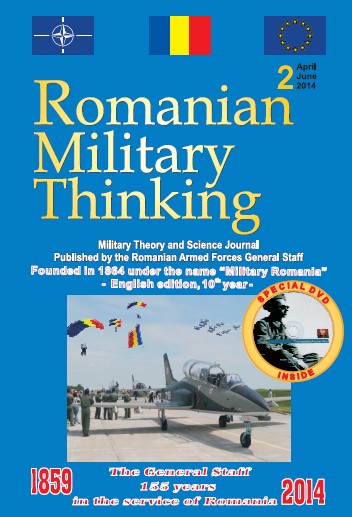IN THE TRIPLEX CONFINIUM OF GREAT POWERS. OUTLOOK ON ROMANIA’S GEOPOLITICAL AND GEOSTRATEGIC POSITION IN THE MAELSTROM BETWEEN 1938 AND 1940 (I)
IN THE TRIPLEX CONFINIUM OF GREAT POWERS. OUTLOOK ON ROMANIA’S GEOPOLITICAL AND GEOSTRATEGIC POSITION IN THE MAELSTROM BETWEEN 1938 AND 1940 (I)
Author(s): Dan PrisăcaruSubject(s): Political history, International relations/trade, Security and defense, Interwar Period (1920 - 1939), WW II and following years (1940 - 1949), Penal Policy, Geopolitics
Published by: Centrul tehnic-editorial al armatei
Keywords: collapse of collective security; geopolitical pressure; buffer state; territorial dismemberment;
Summary/Abstract: Included in the “Cordon Sanitaire”/ “Sanitary Cordon” created by France after the Great War of 1914-1918, Romania was the southern “anchor” of the French defence system in Central and Eastern Europe between 1919-1940, intended to break off the political and ideological influences of Germany and the Soviet Union. Together with the geopolitical and geostrategic importance of the Romanian space, the richness of the natural resources, among which oil occupied a leading position, generated a keen interest among the Great Powers, especially Germany and USSR, which intended to expand their control over Romania. The belated understanding of the “game” of interests, the weaknesses generated by foreign propaganda, a certain rigidity of Bucure[ti foreign policy after 7 March 1936, when the balance of power significantly changed in Europe and a series of deficiencies of the Romanian inter-war state and society were the main causes of the territorial dismemberment of Greater Romania in 1940.
Journal: Romanian Military Thinking
- Issue Year: 2014
- Issue No: 2
- Page Range: 190-198
- Page Count: 9
- Language: English

